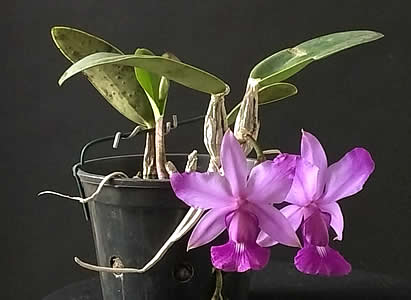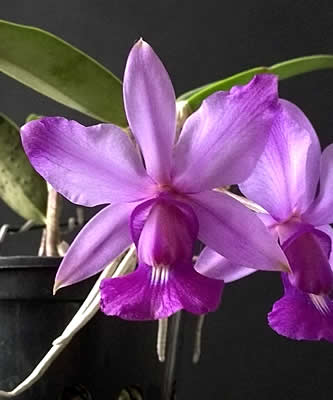The Walker’s Cattleya (Cattleya walkeriana Gardner. 1843) is a natural, sympodial orchid that acts both as an epiphyte and a lithophyte in the states of Goiás, Minas Gerais, Mato Grosso, Mato Grosso do Sul, and São Paulo in Brazil. There are two main subspecies: the sub walkeriana, which blooms between April and June, and the sub princeps, blooming from September to November. Some botanists suggest the existence of a third subspecies, sub bulbosa.
However, Dr. Lou Menezes asserts that the subspecies bulbosa, when cultivated, assumes the characteristics of the type species, thus not justifying its existence. Between Minas Gerais and São Paulo, the Cattleya walkeriana coexists with the Cattleya loddigesii, giving rise to the natural hybrid Cattleya x dolosa. In Goiás, this occurs with the Cattleya nobilior, resulting in the Cattleya x mesquitae.
The genus name honors Lord William Cattley (1788-1835), an English engineer and horticulturist, a pioneer in the cultivation of exotic orchids in Europe and the patron of botanist John Lindley. In 1818, with Cattley’s assistance, Lindley discovered the first “Cattleya”, as a “Cattleya labiata” Lindl., the type variety, first bloomed in his greenhouse (originally from northeastern Brazil). The species name honors Edward Walker, an employee of the Sri Lanka Botanical Garden.

The flowers of C. walkeriana measure 9 to 12 cm in diameter, are fragrant, and last an average of 30 days. Their floral stem emerges from a pseudobulb. The two subspecies have varieties with a wide range of flower coloration. A characteristic of this Cattleya is that it first produces the pseudobulb, and then new roots emerge from it. Its habitat includes sunny forests and moss-covered rock outcrops, in well-ventilated areas, usually near rivers and lakes, at altitudes below 1,800 meters.
The Walker’s Cattleya thrives in temperatures between 12 and 35 degrees Celsius (53.6 to 95 degrees Fahrenheit), so it’s important to protect it from cold during harsh winter days in southern and southeastern Brazil, as it does not tolerate temperatures below 10 degrees Celsius (50 degrees Fahrenheit).
Ideal shading is around 50% (40,000 lux), with relative humidity between 60 to 70%, but lower from June to August, along with good ventilation. It goes dormant in winter, after flowering. Therefore, watering is drastically reduced, every three days in mild winters and every five days in more humid and rainy winters. This is necessary, as its native habitat experiences a dry period in winter.
It can be cultivated on rough-barked wood stumps, preferably of hardwoods (peroba, cinnamon), with or without bark, cork oak. Easy to grow on living trees, such as dracaena, orange, cuitizeira, mulungu, and cork oak, among others. In wooden orchid baskets, use a substrate composed of equal parts pine bark, charcoal, and crushed stone. When cultivated in pots, ensure a good layer of crushed stone for drainage before adding the substrate, as it does not tolerate waterlogged roots. Pots should be small and shallow, containing little substrate for rapid drainage.
During the growth period (spring and summer), water the Walker’s Cattleya on alternate days, ensuring the substrate is dry. In more humid environments, watering can be every two days. A fertilization suggestion includes: Weekly foliar feeding with a solution of 2 grams (1/3 teaspoon) of soluble Peter’s 20-20-20 NPK fertilizer per liter of water. Do a organic substrate fertilization with orchid bokashi type fertilizer or similar once a month, applying a teaspoon, sprinkling over the surface of the substrate. Propagation is by division of clumps, but it is extremely sensitive to the process, requiring a year of rest from flowering afterward.


